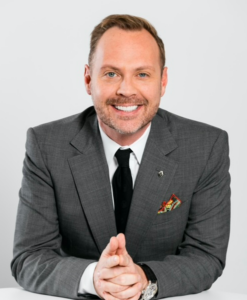Pause for purpose: How a powerful vision helps integrate legacy cultures
Ivanka Djoleva-Minioti of Mondelēz International shares how the company’s purpose has evolved since its inception.

After a merger, communicators are often challenged with integrating multiple legacy cultures into one. That’s a challenge Ivanka Djoleva-Minioti, senior director, global internal communications at Mondelēz International, understands well.
“The company has always grown not only organically but also through mergers and acquisitions,” said Djoleva-Minioti, who joined when the company was known as Kraft Foods Inc. sixteen years ago. Mondelēz International has existed for only ten years in its current iteration, despite owning brands more than 100 years old including Oreo, Ritz, and Cadbury.
In 2017, shortly after the current CEO took charge, the company launched a new set of values and a company-wide purpose. “[We wanted to] build, out of all these legacy cultures, one distinct, unique culture, based on shared values,” said Djoleva-Minioti. It was quickly embedded into the daily lives of every employee. “Every single meeting at Mondelēz started with: Pause for purpose.”
Ahead of her session at Ragan’s upcoming Employee Communications and Culture Conference, we spoke with Djoleva-Minioti about how that purpose has evolved since its launch in 2017.
Mondelēz’s “Snacking Made Right” campaign is really fun and light-hearted. And yet, there’s a lot of sustainability and health concerns around snacking.
Djoleva-Minioti: One of the big learnings on [our] purpose journey was you cannot shy away from these tensions. “People don’t want to have to choose between snacking and eating right.” Snacking, and eating right cannot be a contradiction in our everyday lives.
We had a lot of discussions as an organization, and as a company, of what does snacking right mean? Not just to our colleagues around Mondelēz, but also what does it mean to our consumers? This was the start of that journey and the work.
One of the things we always say: It is a journey. There is no endpoint in which we can say, ha, now, we are there. You have to live your purpose every day, with all the tensions that come with it.
And within the tensions lie your biggest opportunities.
An important first step for us was to make sure that the fundamental way we measure our business results over the long-term included key performance indicators [such as portion control, DE&I, sustainable sourcing, and environmental targets]. These all [are] on the tracker for every one of our business units.
How did you communicate this new purpose to employees? What was your strategy there?
It was not a top-down process. Communications wise, we tend to produce toolkits, roadmaps, shower people with all the possible materials and assets.
This was very different. We launched with our first-ever global town hall – bringing together more than 40k colleagues across dozens of countries for the “big unveil” in real-time. While there were a number of communications to paint the picture, we did not [start with] toolkits, decks, etc.
Instead [we had] a leadership workshop in Vienna, where the top 300 leaders got together. [There were discussions around] what did it mean to them? What did it mean we should not do? What behaviors [would it] take to bring this to life? All of these insights helped shape our letter from the future project, 20 years out. The letter has become our guiding star.
Another thing was, you wouldn’t go in any meeting without having a check-in and a pause for purpose. What does it mean to you? What does it mean to your work? Where are the tensions? What do we need to change?
It was a very organic vetting of the purpose where everyone gets to ask these questions. Of course, we did have the asset library created globally, we made those available to the market. But the work was done through many, many discussions. It was a very exciting launch and time in the company.
That was 2017, six years ago. Looking back, is there something that you wish you had done better?
I think the approach was the right one, for the organization at the time. We had come from a period of cost cutting, transformation, organizational restructuring, [and had] all the legacy cultures from previous mergers and acquisitions. The launch of this purpose and vision, together with the new CEO coming, was the right way to show the way forward, the future, and the strategy — and move away from cost cutting to growth. Embedding a clear and credible corporate purpose was needed to guide the company’s brands and new long-term strategy.
But as you say, it has been almost six years. Two of those were during the global pandemic. That was a litmus test that told us: Look, stop, look, pause, what’s working, what’s not working?
During the pandemic, we discovered how well-embedded our purpose and values were. I was in Europe at the time and remember we were the only company in the UK, for example, that delivered seasonal Easter products. If you would go to the shop, you’d see a sea of Cadbury Easter eggs and bunnies.
The external environment continues to be challenging. There’s inflation, there’s everything that came past pandemic. You cannot stop evolving or changing.
Last year, we launched our evolved vision, Vision 2030, where we want to be by 2030 as a company. With that, there was the new element of bringing sustainability as a fourth pillar into the business strategy together with growth, execution and culture.
Where are we without commitments? On ESG topics, or on DE&I? Everything was related to what our people were telling us was important to them.
How did you start the internal conversation about the importance of linking the individual brands to Mondelēz in the public mind?
It’s about data. One of the data points we’ve discovered is that people who know Mondelēz’s purpose, their favorability towards the company and its products is 15 to 16% bigger. They know you and understand your purpose, which means they are inclined to buy your product more because they trust you. And that is a big percent.
We’ve tracked this over time on our annual reputation survey [both Reputation Institute and Morning Consult data].
The conversations internally started from there. There is merit. We’re hearing and seeing from our consumers that recognizing the company’s purpose can translate into purchase intent. We have to better communicate the purpose of the company externally, not just live it internally.
Join Ivanka Djoleva-Minioti at Ragan’s Employee Communications and Culture Conference on April 25-27. She will speak alongside communications leaders from Kraft Heinz, US Bank, Motorola, Shutterfly and more.







